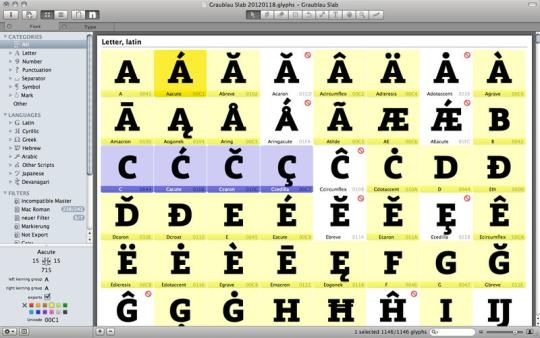

You'll have the ability to choose from among three reports: Catalog (upper case, lower case and numbers, optionally grouped by font family and in a size of your choosing), Repertoire (a chart of every character that each font can print, also in a size of your choosing), and Waterfall (font details and the same basic sample in increasing font sizes of your choosing seemingly one font style per page). If you don't see this menu, click on Show Details to display it. Select the desired fonts in Font Book, choose Print from the File menu, and choose "Font Book" in the pull-down menu for printing options near the bottom of the dialog (the one that also says Layout, Paper Handling, etc.).

If you don't care about having customized sample text, Font Book can do it without any add-ons. The horse has been the silent partner of soldiers in war since ancient times.Mac OS X now has a very basic, built-in font sampler, at least as of 10.7.3. Although he was replaced by weapons systems that reflected the evolution of military technology, the horse proved to be the most flexible and mobile asset available to armies for more than thirty centuries. Horses did more than bear their masters – they participated in battle, biting and kicking both human and equine foes they instilled fear with their tremendous bulk and speed. As LTC DiMarco so ably demonstrates in War Horse, an army's ability to manage horses often determined the outcome of entire campaigns. The mobility, mass, and shock effect of cavalry proved fundamental to military operations from the reign of the Egyptian pharaohs until the Second World War. While the employment of horses in war has been treated elsewhere, this text distinguishes itself as a truly comprehensive study of the military horse.Įmphasizing the crucial role played by mounted forces, DiMarco offers several nuanced interpretations of battles where cavalry played a key role, such as Hattin, Waterloo, and Gettysburg. At Waterloo, for instance, "the perfect timing and aggressiveness" of British cavalry altered the dynamics of the battle (p.
The author also considers the ability of armies to breed quality stock, maintain the health of their horses, and ensure that soldiers know the fundamentals of horsemanship. Furthermore, he argues that the psychology of horse and rider must be taken into account-for if horses are overtaken by fear as a group, it can prove difficult to regain control of them, as evinced by the rout of Roman cavalry at Andrianopole. Of particular interest to American military historians will be DiMarco's analysis of European and American cavalry in the nineteenth century. EUROPEAN WAR HORSE FULLĭuring the Civil War, the ability of Union soldiers to play both offensive and defensive roles meant that they were as effective as their European counterparts, and thus developed their full potential. Only in the analysis of Plains Indian horsemanship does the text show any limitations, ascribing "a large ignorance of events beyond the local region" to native people (p. More accurately, trade networks and kinship connections made it possible, for example, for Dakota Indians in Minnesota to have long-standing relationships with other native people as far north as Winnepeg in Canada. Notwithstanding these minor objections, however, War Horse is an excellent book. In addition to its coverage of military topics, it explores the physical characteristics of horse breeds, the training of horses and riders, and the evolution of horsemanship. Those who love horses will, like this reviewer, be heartened by the book's focus on the horse and the author's steadfast assertion of the horse's selfless service in war.Current Estimated Numbers: fewer than 2,000 Historians of both ancient and modern warfare will find this text of interest, as it attests to the complexity of cavalry actions and considers current trends in military history. Photo source: Wikimedia Commons via Kerri-Jo StewartĪlthough the Caspian is a small horse, it is not considered a pony. The lean and athletic Caspian is believed to be the oldest horse breed in the world and traces its history all the way back to 3000 BCE in Iran. The Caspian was used by royalty and artifacts from this time period depict the Caspian, including the tri‑lingual seal of King Darius the Great, the staircase frieze at the Palace of Persopolis, and the Gold Oxus Treasure of Darabgird.įor many years, it was thought that these ancient Persian horses had died out, but it is now strongly believed that the modern Caspian is the direct descendant of these ancient horses. Currently, Caspians are being bred outside of its native Iran, which has undergone political upheaval over the last several years. Photo source: Wikimedia Commons via Adrian Pingstone It is estimated that there are fewer than 2,000 Caspians left in the world today.


 0 kommentar(er)
0 kommentar(er)
